The Greeks are building a fleet
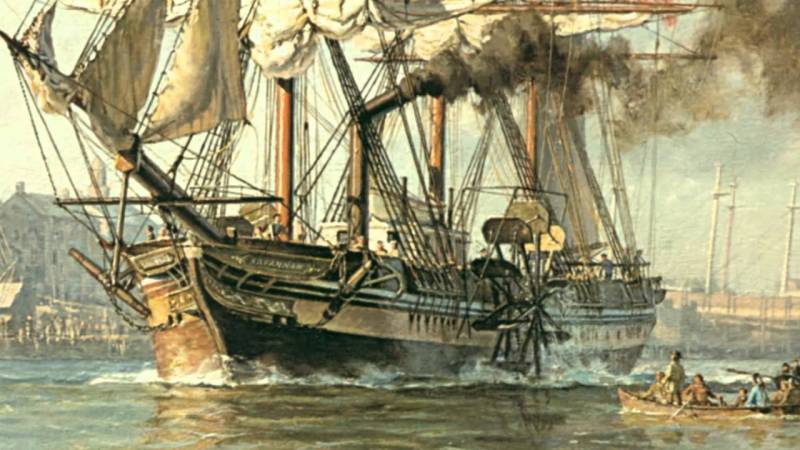
During the Greek War of Independence, many European countries supported the Hellenes, including England, France, Russia, Spain, and the German states. In 1824–1825, on the London Stock Exchange, supporters of the Greeks were able to launch Greek loan bonds for sale; nominally the papers were issued for 2,8 million pounds sterling, but in reality, since the bonds were sold much cheaper than their face value, the Greeks were able to collect only 1,6 million pounds. Nevertheless, the Greeks had gigantic money in their hands, which they also decided to use for construction fleet. The fact is that only by sea could the Turks and Egyptians transfer large contingents of troops to the Peloponnese and Morea, and it was at sea that Greek independence depended on who owned the sea.
What to build?
In many ways, this decision was facilitated by the English philhellene (the so-called those Europeans who fought together with the Greeks for an independent Greece) Frank Abney Hastings, who once served in the Royal Navy. He explained to the rebel leaders that now you have neither a regular army nor normal artillery, so you cannot take the fortresses held by the Turks in Greece. But these fortresses are easy to take if the supply of these garrisons is interrupted, therefore: victory in the struggle for Greece means dominance at sea.
And naturally, the next question arose: what to build? Of course, one and a half million pounds is very good money, but it cannot be used to build a fleet quantitatively equal to the Turkish one. This means, Hastings said, it is necessary to build high-tech warships. Since the first Peksan bomb guns had just appeared in 1822, it was decided to order several ships from England or France armed with just such guns, and in order to gain an even greater technological advantage, they decided to let these ships be steam-powered.
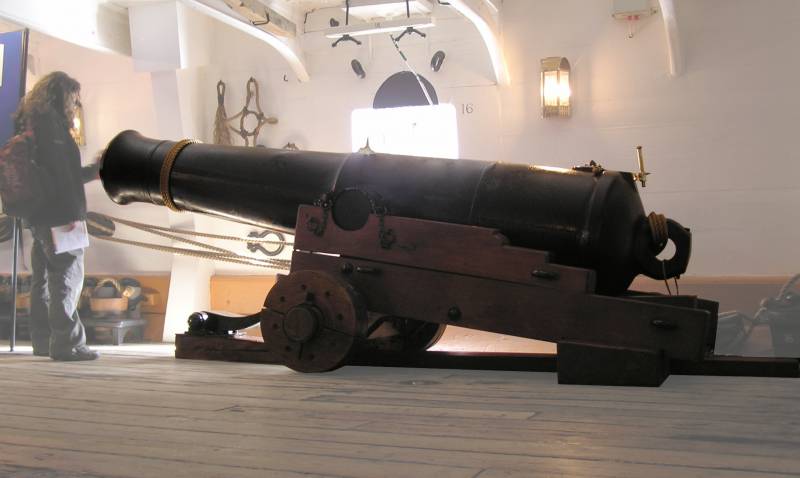
68 pounder bomb gun.
At that time, steam was no longer a novelty; in 1801, a steam ship with paddle wheels on its sides, the Charlotte Dundas, first sailed along the Clyde Canal against the wind. In 1812, the Thames steamer sailed from Greenlock to London. In 1819, the steamship Savannah made the crossing of the Atlantic.
However, both steam engines and Peksan cannons in 1824 were still very crude, unproven technologies, although, of course, they were recognized as very promising in the future.

The steamship Savannah crossed the Atlantic in 1819.
So, it was decided to build a high-tech fleet.
But who will lead it?
After some deliberation, the Greek leaders decided to invite Admiral Thomas Cochrane into their service. We are in article on VO they talked about one of the exploits of Sir Thomas, when he was still a green lieutenant. But his further career was no less epic.
In 1809, he attacked the French fleet in the Basque campaigns, but was bypassed by awards and left the fleet with a scandal. In 1814, Cochrane was accused of fraud in the stock market, demoted from the navy, expelled, and was invited to serve in the Chilean navy, where the Chileans under his command performed many exploits.
In 1824 he moved to Brazil and led the Brazilian fleet in the War of Independence. And now he was overtaken by an invitation from Greece. In this case, the Greeks were not even buying Cochrane's knowledge, they were buying his name and reputation.
In June 1825, Sir Thomas agreed to serve Greece to help it defend its independence, but asked for money in advance - 37 thousand pounds for him to agree, and another 20 thousand if Greece did gain independence.
In addition, Sir Thomas specifically agreed to an increased percentage (3/8 of the cost) when dividing the prize money and the sale of any prizes in ports belonging to Greece, Britain or Russia.
When they came to Istanbul newsKnowing that Cochrane was already on his way, the Turkish fleet immediately left for the Sea of Marmara. In full force.
One traveler in Smyrna noted that
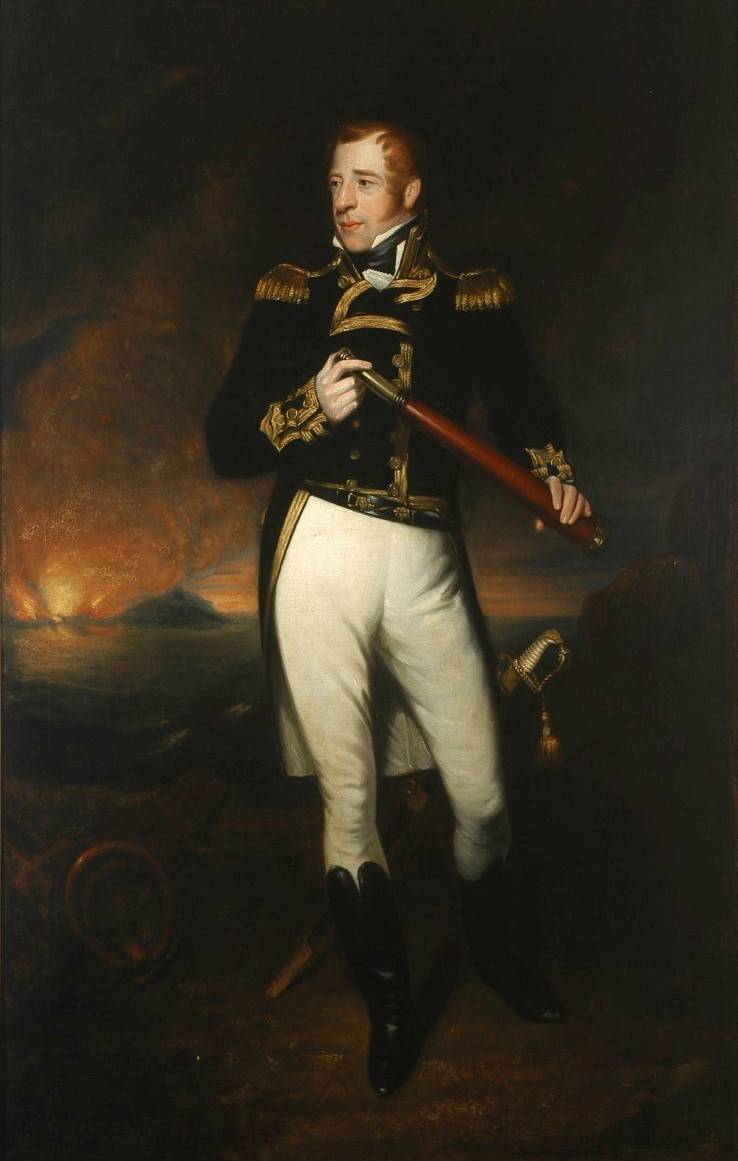
Thomas Cochrane.
Another English merchant in Constantinople wrote:
Cochrane, like Hastings, was a fan of new technology and steam ships, and Hastings' plans were enthusiastically supported by Sir Thomas. Cochrane wrote that at the moment all the privateers of the Greek fleet are simply useless. Since there is no money to build a fleet comparable to Turkey, it is necessary to order steam corvettes, each of which will be armed with two 68-pound bomb guns. This would give a decisive advantage in conquering the waters around Greece.
In addition, to save money, you can buy the ships of the East India Company, which are now being written off en masse in England, and simply remake them - it will take less money, and we will be able to buy more of them.
As a result, 5 steam corvettes with Pexan guns were ordered in England; Sir Thomas was sure that they would enter service within a year.
We shared an orange
It is clear that both the French and the United States looked with longing at the division of the Greek loan. At this moment, the French offered the Greeks the construction of 20 small submarines - Nautiluses.
At the same time, the Americans appeared on the scene, offering the Greeks to build two 44-gun frigates in the image of the Constitution, at 50 thousand pounds apiece. The Greeks, after thinking about it, agreed to the American option, and at the beginning of 1825 the following agreement was concluded: private contractors would build two 44-gun frigates for private customers in London representing the interests of Greece “priced at $250 each and made from genuine Virginia white oak.”
At the same time, Hastings and Colonel Eward Blaquiere collected £15 in donations to build the 000-ton steam corvette Perseverance, armed with four 400-pounder carronades and four 68-pounder bomb guns.
It seemed like what could go wrong?
However, everything went wrong.
American frigates
By November 1825, Greek representatives paid the United States not 500, but as much as 750 thousand dollars, but neither of the two frigates was ready.
Why?
The fact is that in 1825, all US shipyards were at full capacity, since the countries of Latin America that had gained independence had placed orders for ships there. Construction materials were in short supply, and since demand exceeded supply, the cost of work and the construction itself increased sharply. As a result, it turned out that according to the new estimate, both frigates had to cost 1,1 million dollars or 220 thousand pounds, while the construction of the frigates could take a lot of time.
In December 1825, the Greek representative Kostostalvos arrived in New York to resolve the situation, and he realized that in reality the Greeks would only be able to get one frigate. We agreed on the following: the US government will buy one of the frigates, the Liberator, for $233 (despite the fact that the Greeks have already spent $570 on it), and for this money the second frigate, the Hope, will be completed. .
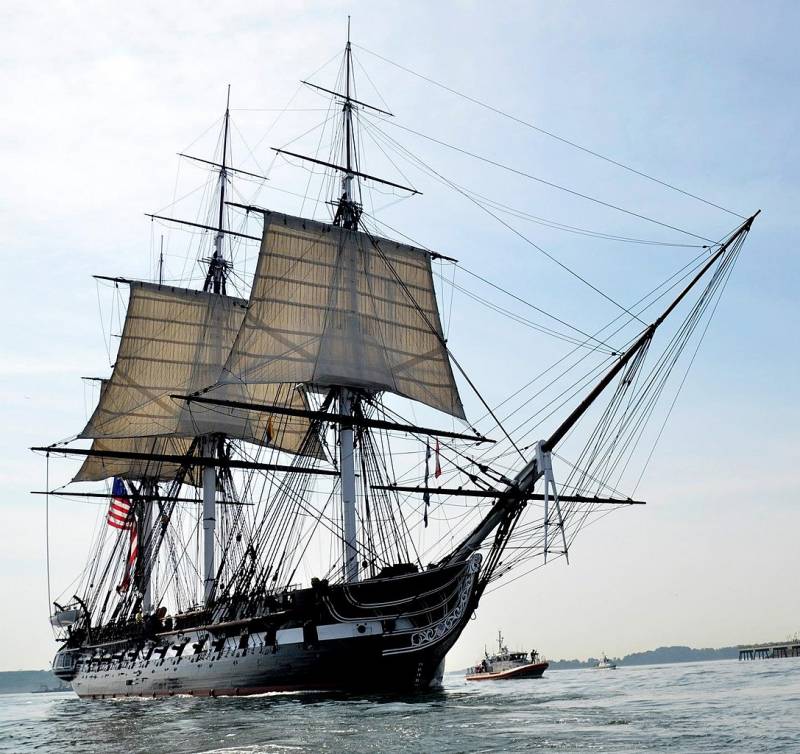
Frigate "Constitution", prototype "Ellas".
She was completed in September 1826, renamed "Ellas" and arrived in Nafplio in November 1826. The frigate cost an absolutely wild sum of 155 thousand pounds sterling, the same price as 100-gun battleships were built in England.
Steam corvettes
In November 1825, Cochrane arrived in London and discovered that of the six corvettes, only one was practically ready - the Perseverance. No decommissioned ships were sold to him, the corvettes were built from scratch, moreover, since the technology of steam ships was still completely raw at that time, in fact, the manufacturers experimented on the client, and for the client’s money. Three of the six corvettes required lengthening the hull, and on two more it was necessary to redistribute the weights.
The situation was not pretty. By the end of 1825, the Greeks planned to have a fleet of two frigates and six steam corvettes, but they had... one corvette and that’s it.
In 1826, Cochrane was informed that the corvettes were almost ready, but soon the news spread - the Egyptian government ordered one steamship in the likeness of Cochrane’s, and from the same John Galloway shipyard as the Greeks, and so that Egypt’s order would be fulfilled first - the local Pasha Mehmet Ali recruited the son of a shipbuilder, Alexander Galloway, as an engineer pasha to Egypt. Steam engines were shipped to Egypt in July 1826, however, they did not reach Alexandria - the ship with them was intercepted by Greek pirates.
Well, on May 18, 1826, the Perseverance was finally able to go to sea (though without guns), which urgently sailed to Greece. However, near Gibraltar his car broke down, the corvette suddenly changed from a steam one to a sailing one and went to Italy, to Cagliari, for repairs. The problem turned out to be that Hastings decided to use charcoal instead of coal, which led to the failure of the machine. The repairs were completed in September, then the Perseverance was sent to the USA to be armed there; as a result, the corvette entered service only in December 1826.
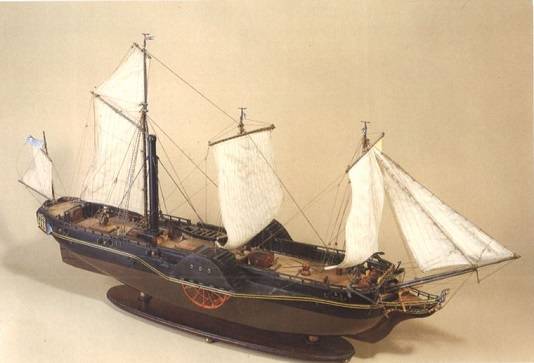
Paddle steamer "Katheria" (originally "Perseverance").
So, as of December 1826, the Greeks received for use only one 44-gun frigate and one steam corvette.
What about the ships Cochrane ordered?
The Enterprise entered trials in December 1826, but they were not successful; it was delivered to the customer only in April 1827. Already while sailing in the English Channel, his car almost exploded three times, and at Ouessant it jerked so hard that it almost broke the steamer itself in half. The ship was taken to Plymouth for repairs and reached Greece only in September 1827. Mercury was not ready until December 1828. The Irrisistable, even after numerous alterations, had problems with its boilers and arrived in Greece in September 1828. Alert and Lasher were never completed and rotted in the Thames.
The Greeks spent 300 thousand pounds on the construction of these ships, and as a result, by the end of 1826 they received only one of them.
The idea of Hastings and Cochrane, great in theory, completely failed when faced with the harsh reality - steam shipbuilding at that time had not yet come out of the swaddling clothes and was a crude, completely untested technology.
The results
In total, the super-tech games cost the Greeks almost 500 thousand pounds sterling, that is, a third of the loan received, and the return on this money was small. Thank God - I had enough intelligence and common sense not to invest in the French Nautiluses.
What distinguished the frigate Hellas and the corvette Karteria (as the Greeks renamed Perseverance) in the service of the Greeks?
In mid-1827, Cochrane sent them to the Morea to intercept the ship on which Ibrahim Pasha, son of Mehmet Ali, commander of the Egyptian fleet, was sailing. The Greeks failed to intercept Ibrahim, but inadvertently intercepted his harem. As Cochrane later reported upset:
On July 16, 1827, he appeared in the roadstead of Alexandria and tried to attack the Egyptian fleet with fireships in order to burn it in the bay. The plan failed because the Greek sailors rebelled and refused to participate in such a dangerous enterprise.
Finally, on September 30, 1827, Hastings attacked 11 small Turkish ships with red-hot cannonballs on the Carteria, and burned them all after an hour of shelling. This shelling became the reason for the confrontation in the Bay of Navarino between the Turks and the allied squadron of England, France and Russia, and the subsequent destruction of the Turkish-Egyptian fleet.
Thus, even the greatly reduced and technologically crude Cochrane fleet was quite able to achieve good results.
Hastings died in 1828 when he tried to fire at one of the Turkish fortresses from his defective steamship. Sir Thomas resigned in November 1828; after Navarino, Greece no longer needed his services.
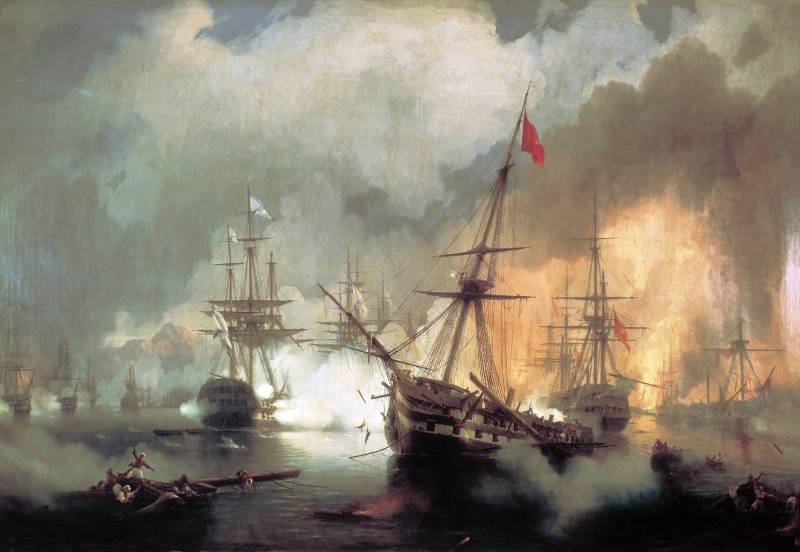
Battle of Navarino, 1827.
Mehmet Ali, after Navarino, was very offended by the French and expelled almost all technical and military specialists, except for the French adventurer Joseph Seve, who converted to Islam, his Pasha made him generalissimo of the Egyptian army and gave him the name Suleiman Pasha al-Faransawi (Suleiman Pasha of France).
It turned out that the war at sea was won for the Greeks by the allied squadrons of Russia, France and England. It was they who won supremacy at sea for Greece, and thereby made it independent. God was on the side of the large battalions this time too.
References:
1. Roger Charles Anderson “Naval Wars in the Levant (1559–1853)” – Princeton, Princeton UP, 1952
2. Édouard Driault et Michel Lhéritier “Histoire diplomatique de la Grèce de 1821 à nos jours: L'Insurrection et l'Indépendance (1821–1830)”, t. I – PUF, 1926.
3. William St Clair “That Greece might still be free: The Philhellenes in the War of Independence” – Cambridge, Open Book Publishers, 2008.
Information